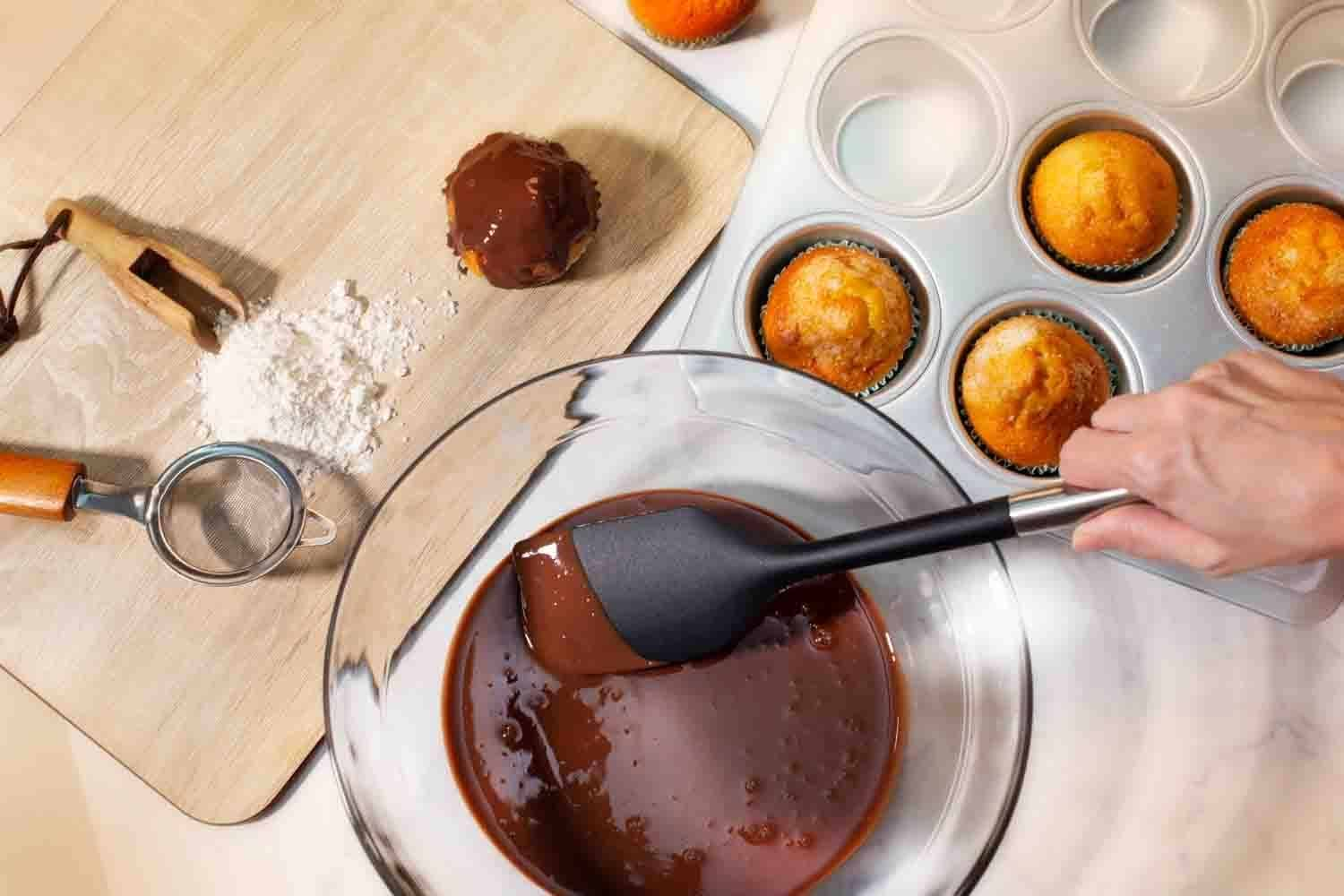How to prevent silicone utensils from warping or absorbing odors
How to prevent silicone utensils from warping or absorbing odors
No matter what kind of kitchen you have or how skilled a cook you are, if you look around, you’ll always find silicone utensils in it. These cooking accessories and tools have become essential for everyday use. From spatulas and ladles to molds—silicone is now more present than ever in just about every drawer of modern kitchen tools. And honestly, it’s no surprise! They’re super versatile, lightweight, flexible, and can handle high temperatures. Not to mention, they’re non-stick, which makes them so much easier to use with delicate foods, and also to clean. In case you didn’t know, you can even put them in the dishwasher. In short, they’re truly amazing.
So, does that mean there are no downsides at all? Well, as surprising as it sounds, yes—if you use them the wrong way, silicone can end up warping and, even worse, absorb unwanted smells and flavors. If you want to avoid that and keep your silicone kitchen utensils fresh for many years without bad odors, keep reading we’ll explain everything in detail.

Benefits of Silicone Kitchen Utensils
Let’s start by looking at the good stuff—the advantages! Because yes, silicone is one of the star materials that has made its way into our kitchens and it’s definitely here to stay. And trust us, that’s no accident. The reasons are pretty simple, and here they are one by one:
-
Heat resistance: One of the things we love most about silicone kitchen utensils is that they can handle temperatures between 200ºC and 250ºC (about 390°F to 480°F). This makes them perfect for stirring food in super-hot pots or pans without worrying about them melting. You probably know exactly what we mean, right?
-
No need to worry about scratching your pans: especially if you use non-stick cookware. Silicone is perfect compared to metal, which can scratch and damage more delicate surfaces.
-
Their flexibility and practicality: Silicone utensils adapt perfectly to any shape, reaching every corner of your pots and bowls. They’re so easy to handle that once you use them, you really won’t want to go back to anything else.
-
Food safety: Good-quality, food-grade silicone doesn’t release any toxic substances at regular cooking temperatures. Of course, that’s as long as you always follow the manufacturer’s instructions.
-
Easy to clean: Like we mentioned, most of these utensils can easily go in the dishwasher without any problem.
So, what are the disadvantages of silicone kitchen utensils?
Unfortunately, silicone kitchen utensils do have some drawbacks you should keep in mind—especially if you’re thinking about upgrading your cookware:
-
They can end up warping: The truth is, if you leave them resting on very hot pans for a long time or in direct contact with heat sources (like oven heating elements), they can lose their shape. That’s just how it is.
-
Absorbing certain odors: Over time, silicone can pick up smells from soap (due to washing) or from certain foods—especially if you cook with garlic or onion—and sometimes even flavors.
-
Making sure of silicone quality: Always choose accessories made with 100% food-grade silicone and free from harmful components. In short, stick to trusted manufacturers like the ones we offer in our online store.

How to Properly Clean Silicone Kitchen Utensils
Now comes the million-dollar question. Yes, keeping your utensils clean really is the key to making sure these accessories stay in perfect condition—meaning no bad smells or unpleasant flavors that could ruin your final dish.
Here are a few simple tips to help make sure that doesn’t happen:
- Wash your utensils as soon as you finish using them, so leftover grease and food don’t have a chance to stick.
- Always use hot water and mild soap. Make sure to really scrub all the surfaces thoroughly.
- Check all the corners and seams of your kitchen utensils to make sure no food is trapped there—it happens more often than you might think.
Give them a deep clean from time to time. The best way is to soak your utensils for about 30 minutes in hot water with a tablespoon of baking soda and a little white vinegar. Afterwards, rinse them well and let them air dry.
How to Prevent Silicone Utensils from Warping
Super easy. Just try not to leave them resting on hot pans for too long. Yes, we know we mentioned they can handle high temperatures, but prolonged contact can really damage their shape. The same goes if they touch the flame or are placed directly on hot electric burners.
Our recommendation is to never leave silicone utensils inside a boiling pot—even if you’re stirring—or on a hot pan without moving them. Especially if you want your silicone kitchen utensils to stay in perfect condition for many years to come.
So, in conclusion: Remember that silicone is safe, practical, and lightweight—an excellent addition to your kitchen tools, as long as you use it properly. If you need to update your kitchen utensils, check out the options we have at Arcos and choose the tools that best suit you and your cooking style.



